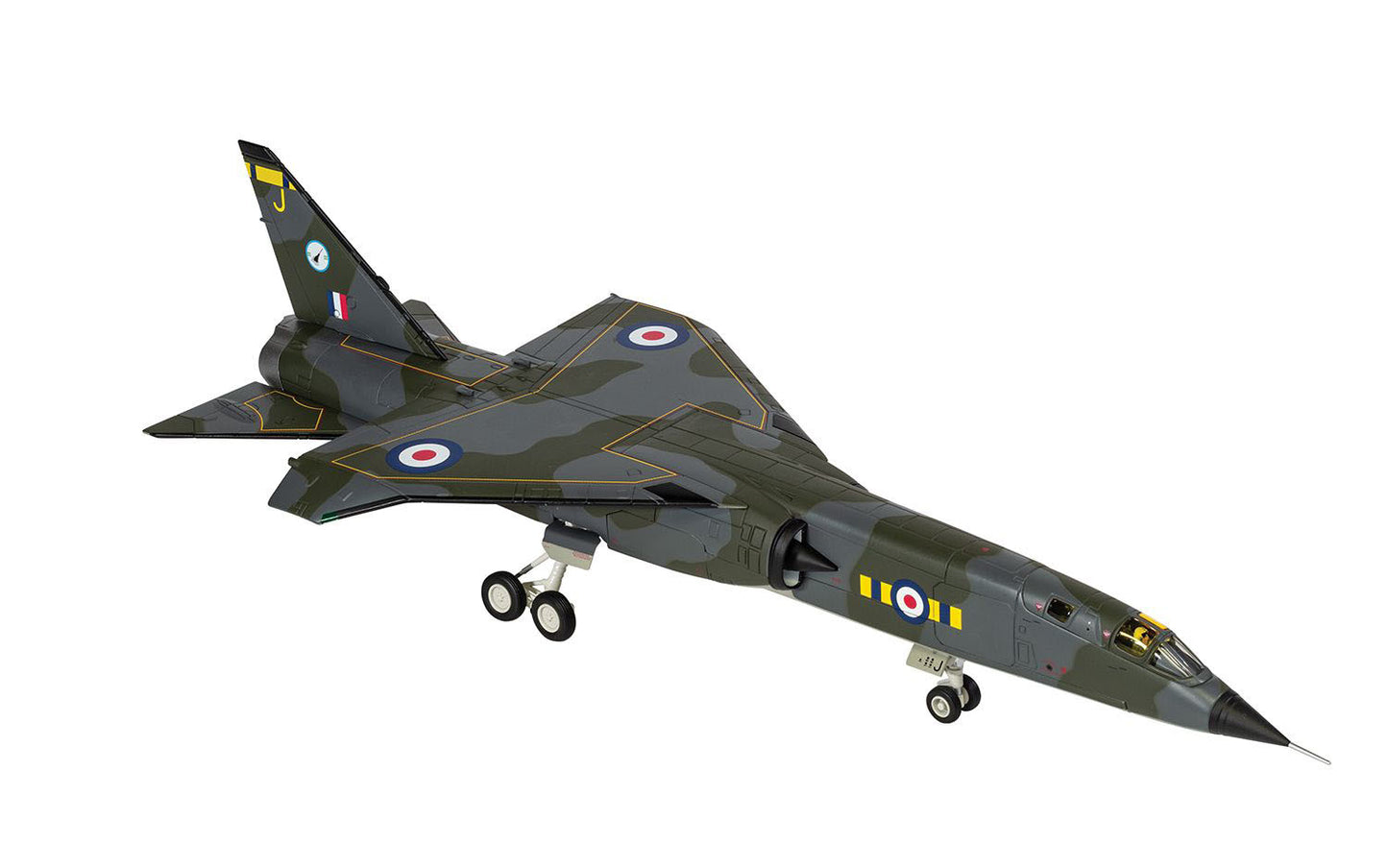Corgi
BAC TSR-2 Reconnaissance Aircraft "XS954 No. 40 Squadron RAF Coningsby Special 'What If' Operational Livery" British Royal Air Force "The Aviation Archive" Series 1/48 Diecast Model by Corgi
BAC TSR-2 Reconnaissance Aircraft "XS954 No. 40 Squadron RAF Coningsby Special 'What If' Operational Livery" British Royal Air Force "The Aviation Archive" Series 1/48 Diecast Model by Corgi
Couldn't load pickup availability
- Brand new 1/48 scale diecast model of BAC TSR-2 Reconnaissance Aircraft "XS954, No. 40 Squadron, RAF Coningsby, Special 'What If' Operational Livery" British Royal Air Force "The Aviation Archive" Series die cast model by Corgi.
- Brand new box.
- Detailed exterior.
- True-to-scale detail.
- Detailed crew figures.
- Includes display stand.
- Officially licensed product.
- Manufacturer's original unopened packaging.
- Dimensions approximately Length- 15, Wingspan- 6.25 inches.
- Diecast metal and plastic construction for durability and a heavy, realistic feel.
- It is a highly detailed and accurate model, perfect for collectors and enthusiasts of military history.
- Realistic panel lines, antennas, access panels, and surface details for an authentic representation of the real-life airplane.
HISTORY ASPECTS:
The British Aircraft Corporation TSR-2 XS954/J, assigned to RAF No. 40 Squadron, is one of the most iconic examples of British aviation innovation that, despite its potential, never saw active service. The TSR-2, designed in the early 1960s, was an advanced tactical strike and reconnaissance aircraft intended to replace the English Electric Canberra. It boasted cutting-edge technology, including advanced avionics, high speed, long range, and the ability to fly at low altitudes with great precision. The aircraft's design was intended to give the RAF a significant edge in penetrating enemy airspace and delivering tactical strikes.
No. 40 Squadron, which was to operate the TSR-2, was set to become the spearhead of the RAF's strategic strike capability. However, the TSR-2 program faced numerous challenges, including escalating costs, political opposition, and technical issues. Despite the aircraft's promising performance during initial test flights, the project was abruptly canceled in 1965. This decision was influenced by a combination of economic pressures and shifting defense priorities within the British government, which opted to invest in other platforms and rely more heavily on American aircraft.
The cancellation of the TSR-2 was a significant blow to British aerospace ambitions. XS954/J, like its counterparts, was never fully operational or deployed in any conflict. The aircraft remains a symbol of what might have been, representing both the peak of British aerospace engineering and the impact of political and economic constraints on military innovation. The TSR-2's legacy endures as a case study in the complexities of defense procurement and the balance between ambition and practicality.
With its precise detailing and authentic representation of No. 40 Squadron's markings, this 1:72 scale model captures the essence of an aircraft that, despite never seeing combat, continues to fascinate and inspire with its story of innovation and unrealized potential.
Share





